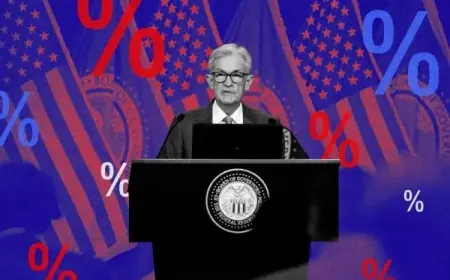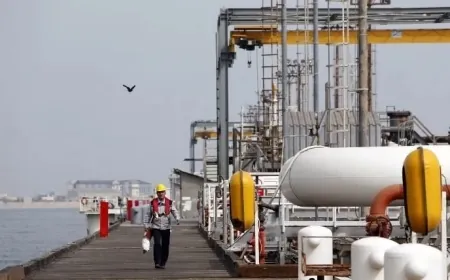Oil Prices Steady as Market Awaits OPEC+ Output Decision, US Inventory Data
Crude holds near $65 with light trading ahead of US stockpile data and a key OPEC+ decision on output expected to shape the energy market this week.

Oil prices stayed mostly flat Tuesday, as traders took a cautious stance ahead of new inventory data from the U.S. and an important weekend meeting of major oil producers.
West Texas Intermediate (WTI), the U.S. benchmark, hovered just above $65 a barrel — giving up earlier gains after failing to hold above its 100-day moving average of $65.67. Volumes remained lighter than usual with the July Fourth holiday approaching, and the market appeared to be in wait-and-see mode.
Cushing Storage Draw Gets Traders’ Attention
One of the more closely watched data points this week is how much oil is sitting in storage at Cushing, Oklahoma — the main delivery point for WTI futures. The American Petroleum Institute reported a 1.4 million-barrel drop in stockpiles at the hub last week. If confirmed by the Energy Department’s numbers due Wednesday, it would mark the biggest draw since January and push inventories to their lowest seasonal level in nearly two decades.
That kind of decline suggests tighter near-term supply, which could lend support to prices — especially if demand holds up over the summer.
OPEC+ Output Decision Due This Weekend
The other major variable is what happens at the virtual OPEC+ meeting set for this weekend. The group, led by Saudi Arabia and Russia, is expected to announce another bump in production quotas.
While that could put downward pressure on prices later in the year, analysts say the market has likely already priced in a modest increase. According to Goldman Sachs, the most likely outcome is a quota hike that won’t move markets much because expectations have already shifted in that direction.
Still, if the group surprises with a larger increase — or if internal disagreements slow the pace of the plan — traders will likely respond.
From Middle East Truce to Market Calm
Last week’s brief truce between Israel and Iran sent crude prices tumbling, but things have settled since. Volatility has dropped to pre-conflict levels, and attention is now shifting away from geopolitics and back to core fundamentals like supply, demand, and inventory trends.
What happens next will largely depend on a mix of these short-term signals: How much oil is in U.S. storage, how producers respond to future demand forecasts, and whether consumer trends in key regions like Asia and the U.S. continue to support the current price range.
For now, the oil market is holding its breath — and holding steady.
Also Read: Oil Prices Rise as Iran-Israel Ceasefire Holds Under Strain; Trump Issues Sharp Warning
|
Follow iShook on Social Media for More Tips and Updates! |































































